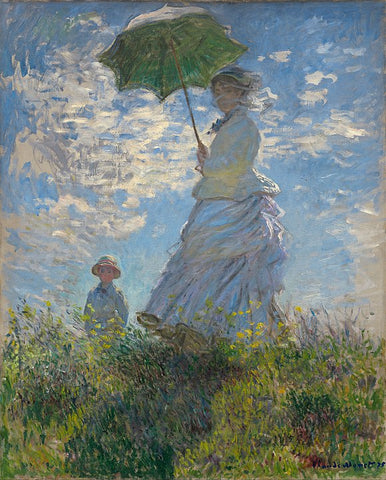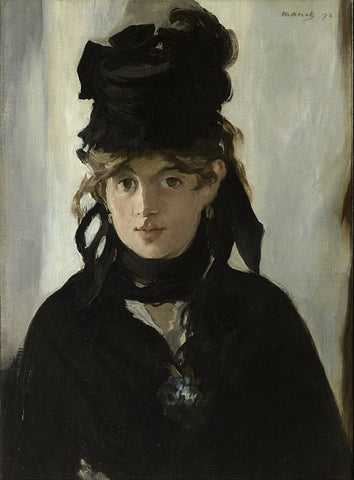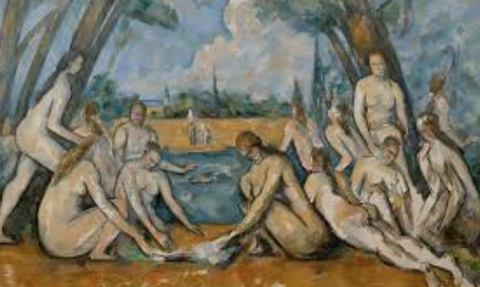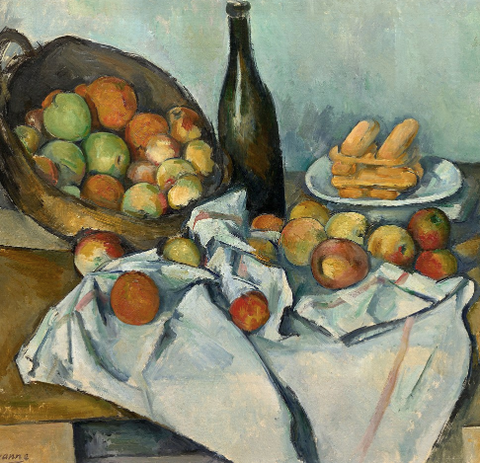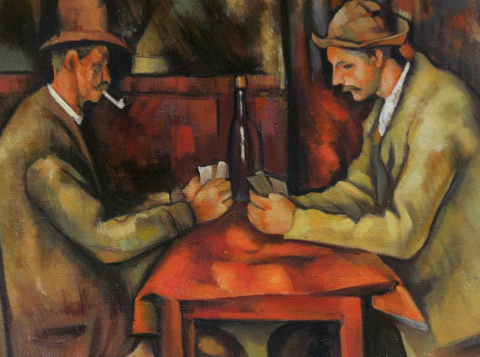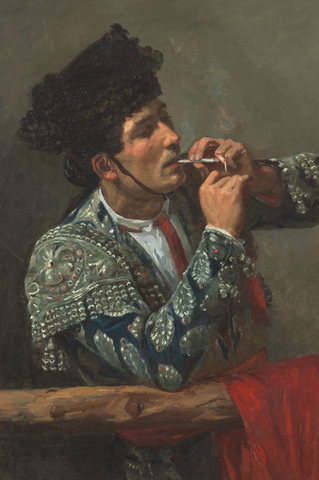10 Famous Impressionist Artists and Paintings
What is impressionism art?
Impressionism is an artistic direction in literature, music, and painting. It began at the end of the 19th century to bring emotion into artistic creation and form to expressive art. Its bases are on realistic and naturalistic observation of nature.
Impressionism establishes a new relationship with the art world. Painters were no longer satisfied by transforming, developing traditional forms, as they did with other past movements they where looking for a new ways of visual expression.
How did impressionists paint?
An Impressionist artist left the studio to paint under the open sky. The most important criterion of this artistic direction is in the presentation of objects and nature by color analysis. And painting in open air where there is sun light and air.
One of the most consistent impressionists was the French painter Claude Monet. After his impressionism artwork: Impression, Sunrise in which the whole impressionism movement was influenced by. The driving force of this artistic direction was the desire of several artists to approach painting in a different manner compared to the official circles of the Parisian institutional art: the Salon.
Artists came from different schools, each separately, and instinctively. The themes, techniques, and artistic language of their works were features that distinguished Impressionism.
Art critics at the time rejected the famous impressionist artists on this list. Impressionism was a radical departure from traditional realistic works of the time.
Top 10 Famous Impressionist Artists
- Paul Cézanne
- Claude Monet
- Édouard Manet
- Berthe Morisot
- Edgar Degas
- Mary Cassatt
- Pierre-Auguste Renoir
- Camille Pissarro
- Gustave Caillebotte
- Alfred Sisley
Paul Cezanne

Paul Cezanne's work laid the foundations for the transition from the 19th-century artistic endeavor to a new, radically different art world in the 20th-century. Cezanne is believed to have bridged the gap between the late 19th-century and 20th-century.
Cezanne's repetitive and exploratory brushstrokes, which are often repeated, are easily recognizable. Cezanne used small brushstrokes and planes of color to create complex fields.
Cezanne's work was repeatedly rejected by the Salon in Paris, and mocked by art critics when it was exhibited alongside the Impressionists. Cezanne's works were still considered to be a masterpiece by the younger artists who visited his Aix studio.
Picasso, Braque, and Metzinger were inspired by Cezanne's explorations in geometric simplification and optical phenomena. They also encouraged Gleizes and Gris to explore more complicated views of the same subject, eventually leading to the fracturing form.
Cezanne's pioneering artistic inquiry would have profoundly influenced the development of modern art.
The Card Players

The Card Players is a collection of oil paintings that Cezanne created during his time. There are five versions. They vary in size and reflect the number of players and the location where the game is played. Cezanne also did numerous studies and drawings in preparation of The Card Players Series.
Claude Monet

Oscar-Claude Monet, a French painter who was one of the founders of impressionism.
Monet is regarded as a major precursor to modernism art. He was particularly known for his efforts to portray nature as he saw it. He was the most prolific and consistent practitioner of impressionism's philosophy, which is about expressing one's views before nature. This included Plein Air (outdoor) landscape paintings.
Monet was born in Le Havre (Normandy) and began to draw and explore the outdoors at an early age. His mother Louise-Justine Aubree Monet supported him in his desire to become a painter. However, his father, Claude Adolphe, disagreed and encouraged him to pursue a business career.
Impression, Sunrise
Impression, Sunrise was shown for the first time at the "Exhibition of the Impressionists" in Paris, April 1874. It is believed that the painting inspired the name of the impressionist movement.
Sunrise, Impression displays The port of Le Havre, Monet's hometown. It can now be seen at the Musee Marmottan in Paris.
The Artist's Garden at Giverny by Monet
While the deep purple colors of lilac dominate this painting, we can see how red, gold, blue, and brown colors are spread throughout the composition. They are merged into each other with a mastery.
This artwork is a great example of what made Impressionism such a revolutionary style at the turn of the century. The liveliness that Monet creates with the use of bold colors and quick brushstrokes is beautifully displayed. We can imagine and see the garden the way Monet saw it.
Monet created 250 paintings inspired by scenes from his garden. Such as his water lilies, mourning willow, and bright colored flowers. Monet lived in Giverny, from 1883 until he died in 1926. Since 1980, Claude Monet's house and garden was turned into a museum, it has been visited by thousands of tourists.
Édouard Manet

Edouard Manet was a French modernist artist. He was one of the first artists of the 19th century to paint modern life and a key figure in the transition from Realism to Impressionism.
Manet was born into an upper-class family with strong political connections. He rejected the future envisioned for him and instead became obsessed with the world of painting and created his own vision.
Manet spent the last 20 years of his life building relationships with other great artists and developing his style, which would be hailed as an innovation and a major influence on future painters.
A Bar at the Folies-Bergere
A Bar at the Folies-Bergere is believed to be his final major work. It was created in 1882 and exhibited at the Paris salon. It shows a scene from the Folies Bergere Paris nightclub.
Berthe Morisot

Berthe Marie Pauline Morisot, a French painter, was part of the Paris circle of painters who were known as the Impressionists. Morisot was one of the first female painters to exhibit at the highly regarded Salon de Paris in 1864.
The works at the Salon were judged annually by Academicians in Paris. Eugene Manet was her husband and colleague.
Summer's Day
This painting shows two women sitting in a rowboat. It was created in the Bois de Boulogne. This painting was painted by Morisot using a very unusual palette.
The dark blue coat of the woman to the right was painted by Morisot in cerulean, a rare color used by Impressionists. The green leaves are painted with a mix of viridian and lead white. At this time, cadmium yellow was not widely used.
Edgar Degas

Edgar Degas is known for his oil paintings and pastel drawings. He also produced bronze sculptures, prints, and drawings.
In addition to his famous ballet dancers and bathing women, Degas painted racehorses and racing jockeys, as well as portraits. His portraits are notable for their psychological complexity and for their portrayal of human isolation.
The Absinthe Drinker by Edgar Degas

In The Absinthe Drinker, Edgar Degas depicts a scene from the bohemian life of Paris at the end of the 19th century. Absinthe was a favorite drink of many creative artists who lived in Paris and made the city the center of art life.
The Absinthe Drinker shows a man and a woman sitting in a Parisian cafe in New Athens. The woman looks down and stares blankly at the glass which is filled with a greenish liquid, absinthe. She appears to be unaware of the man sitting next to her. Although the man has his elbow on the table, close to her drink. He has a pipe in his mouth and appears to be looking at something.
The painting shows one aspect of Parisian life at the time: the growing social isolation, and the alienation of the people. Alcoholism was a social scourge and associated with the working class, as well as the art world.
Mary Cassatt

Mary Stevenson Cassatt was a printmaker and painter from the United States. She was born in Allegheny City, Pennsylvania, but spent the majority of her adult life in France, where she met Edgar Degas and exhibited alongside the Impressionists. Cassatt frequently depicted the social and private lives of women, with a focus on the close relationships that exist between mothYou ers and their children.
The Boating Party
Cassatt painted The Boating Party in Antibes, France, during the winter of 1893–1894. Cassatt and her mother spent January and February 1894 in the Villa "La Cigaronne" near Cap d'Antibes. Cassatt painted The Boating Party when she was 49 years old.
A woman, a baby, and a man in a sailboat are depicted in The Boating Party. The boat has three thwarts, a canoe stern, and no boom. The boat's interior is described as yellow. It's a unique painting in Cassatt's collection. While it depicts her well-known subject of a mother and infant, the majority of her other works are situated in interiors or gardens. It's also one of her most substantial oil works.
Pierre-Auguste Renoir

Another important figure in the creation of the Impressionist style was Pierre-Auguste Renoir, a French painter. Renoir was influenced by prior contemporary artists Camille Pissarro and Édouard Manet's style and subject matter.
Following a series of rejections by Salon juries, he teamed up with Monet, Sisley, Pissarro, and other Impressionists to stage the first Impressionist show in April 1874, in which Renoir exhibited six paintings. Renoir's paintings are known for their vivid light and saturated color, and they frequently depict individuals in intimate and honest settings.
Two Sisters (On the Terrace)
Renoir worked on the picture on the terrace of the Maison Fournaise, a restaurant in Chatou, a western suburb of Paris, located on an island in the Seine.
A young woman and her younger sister are sat outside with a tiny basket containing wool balls in the painting. With the River Seine behind it, one can glimpse vegetation and foliage over the rails of the terrace.
Camille Pissarro

Camille Pissarro, a Danish-French Impressionist and Neo-Impressionist painter, was born on the island of St Thomas in the Caribbean (now in the US Virgin Islands, but then in the Danish West Indies). His contributions to Impressionism and Post-Impressionism make him significant.
Pissarro drew inspiration from masters such as Gustave Courbet and Jean-Baptiste-Camille Corot. When he took up the Neo-Impressionist style at the age of 54, he studied and worked alongside Georges Seurat and Paul Signac.
Le Boulevard de Montmartre, Matinée de Printemps
Camille Pissarro's work, Le Boulevard de Montmartre, Matinée de Printemps depicts Paris' Boulevard Montmartre. It was auctioned at Sotheby's in London on 5 February 2014 for £19,682,500, more than double its pre-sale estimate.
Gustave Caillebotte

Gustave Caillebotte was a French painter who was a member and patron of the Impressionists, while painting in a more realistic style than many of his contemporaries.
Caillebotte's early interest in photography as an art form was well-known. Many home and familial settings, interiors, and portraits were painted by Caillebotte. Caillebotte is most known for his paintings of metropolitan Paris, such as The Europe Bridge, in which he depicts members of his family.
Paris Street; Rainy Day
Gustave Caillebotte (1848–1894)'s best-known work, Paris Street; Rainy Day, is a big 1877 oil painting by the French artist Gustave Caillebotte (1848–1894). It depicts a group of people going through the Place de Dublin, then known as the Carrefour de Moscou, in north Paris, at a crossroads east of the Gare Saint-Lazare.
Although Caillebotte was a friend and supporter of many impressionist painters, and this piece is considered part of that school, it is distinguished by its realism and reliance on line rather than sweeping brushstrokes. The picture debuted at the 1877 Third Impressionist Exhibition. The Art Institute of Chicago currently owns it.
Alfred Sisley

Alfred Sisley was an Impressionist landscape painter who was born in France and lived there for the majority of his life, but kept his British citizenship. He was the most dedicated of the Impressionists to painting landscapes in the open air (i.e., outdoors). He only dabbled in figure painting on rare occasions, and, unlike Renoir and Pissarro, he felt Impressionism to be sufficient for his creative demands.
Camille Pissarro and Edouard Manet, two previous modern painters, inspired him with their style and subject matter. Sisley has been overshadowed among the Impressionists by Monet, whose work he mimics in style and subject matter, while Sisley's effects are more subdued.
The Bridge at Villeneuve-la-Garenne
The cast-iron and stone suspension bridge that was built in 1844 to connect the village of Villeneuve-la-Garenne with the Paris neighborhood of Saint-Denis is depicted in this close-up painting, sharply angled perspective.
Sisley added color to the scene by depicting tourists on the Seine and along the riverbank. Flat, high-keyed color strokes depict the transitory appearance of sunshine on water.
What are the characteristics of impressionism art?
Impressionist painters approached nature in a completely different way than their predecessors. Their new style has changed the traditional conventional approach of art. Impressionist artists did not paint nature as a static subject but endeavored to convey its constant movement and pulsation.
Impressionist painters often displayed the breeze, the ever-changing sky, and light reflected on the water. For Impressionist, nature was the proper mistress to their works. They immersed themselves in it and the visually displayed their experience through their art. Impressionists chose motif landscapes such as rivers, regattas, picnic scenes, snow, clouds, and water lilies.
Parisian life
In addition to the landscape, light, and atmosphere, the Impressionists also dealt with scenes from everyday life. The range of themes expands from landscapes to city life, dances, horse races, cafes, and theaters.
Edgar Degas is remembered as a great artist who painted human figures, depicted his works indoors compared to other impressionists who painted outside. Classical ballet was highly valued in Paris. And Degas painted countless versions of ballet scenes with ballerinas dressed in white. Depicting the passion of Parisians.
The Impressionists released the color of the descriptive role, which means that, for example, the sky does not necessarily have to be blue, the grass green, and so on. The visual shapes and colors of objects in Impressionist paintings are dynamic and influenced by light changes and the shadows are transparent.
What inspired impressionism art?
Changes in society throughout history usually influence changes in art. During the "long 19th century" (the period from the Great French Revolution of 1789 to the First World War in 1914), it led to changes in society through political and social revolutions which helped inspire the impressionist movement.
So what was different about the Impressionists compared to the works of the old masters? Impressionism provoked a significant public reaction in the late 19th and early 20th centuries. The industrial revolution also contributed to impressionism movement.
There were new state systems, a new bourgeois class, urbanization, colonization, and many other phenomenas. There where many discoveries, such as the steam engine or mechanical loom, enabled faster and easier production and the accelerated development of technology, science, and traffic. Among these significant discoveries was photography, which had a great influence on art.
Inspired by this new invention, many Impressionist painters began to make some changes to their compositions. One of the main goals of an impressionist painter was to capture the moment within an image, as a camera could do. With colors and various different techniques, the Impressionists managed to preserve the significance of the painting and prevent photography from completely taking its place in art.
When did impressionism art start?
Impressionism began in the 1860s. Its emergence and development were conditioned by history and culture in the metropolis of Europe.
The lively nightlife of Paris and Bohemian centers where friendships nurtured, rivalries erupted, exchanges ideas, and especially developed a sense of community — all this was important for the development of Impressionism. It had everything that a young artist of that time needed — art, music, literature, philosophy, theater, opera, dance — young people came from all over the world. One of the most prominent places where impressionist artists gathered at was the Café Guerbois.
In 1863, Emperor Napoleon III established the Salon des Refusés. During that time there were various Impressionists among them, included Pissarro and Manet. Salon des Refusés became an official institutions which enabled artists to sell their works and increased their social recognition. Furthermore, the social, economic, and cultural development contributed in creating a new system of presenting art in which artists where independent.
The Impressionists had eight exhibitions between 1874 and 1886. Off course the number of artists and names changed, and so did the places where they exhibited their art. Over time, the impressionists separated, some sided with the Salon (for financial reasons and fame), and others continued in their own individual style.
Impressionism remains one of the most significant artistic movements of the 19th century. Due to its innovative technique, expression, themes, color, and abstraction, thus laying the foundations for 20th-century post-impressionism and contemporary art.
Masterpiece Impressionist works
Woman with a Parasol - Madame Monet and Her Son by Claude Monet
In the composition is lady Camille and she stands on the highest point of the hill with the beautiful blue sky as the background. She is wearing a white dress and a short coat. Her cloth is blowing in the wind and she turns and looks at her husband for a moment before continuing to walk. Monet has captured a snapshot of his family.
The Bridge at Moret by Alfred Sisley
The Bridge at Moret by Alfred Sisley: This painting, which he completed in 1893 is exhibited in the Musee d’Orsay. Moret-sur-Loing is a small and charming historical town in the Seine-et-Marne department of north-central France and was a source of inspiration for Monet, Renoir, and Sisley.
The Banks of the Loing by Alfred Sisley
During the 1880s he painted multiple views of the village of Saint-Mammès located at the confluence of the Seine and Loing rivers.
Langland Bay by Alfred Sisley
This painting was probably painted from a window of the Osborne Hotel overlooking the Bay.
Fog - Voisins by Alfred Sisley
Alfred Sisley settled at Voisins, a village near Louveciennes in Seineet-Oise, in 1871. That is presumably where he painted this fog effect with a hint of a fence in the background, foliage on the left, a tree with twisted branches on the right beneath which a crouching woman seems to be picking flowers.
Snow at Louveciennes by Alfred Sisley
Snow at Louveciennes by Alfred Sisley: For Sisley, the countryside in winter had a real attraction, as his solitary temperament was perfectly suited to capturing the sadness and desolation of nature.
View of the Canal Saint-Martin by Alfred Sisley
This landscape depicts a stretch of the Canal St Martin near the Bassin de la Villette, in Paris. Houses and other buildings overlook the canal from both sides, while in the distance, beyond the lock and towards the center of the city, buildings loom up in the haze.
Julie Daydreaming by Berthe Morisot
Julie Daydreaming was painted in 1894, only one year before Berthe Morisot passed away. Morisot contracted pneumonia while keeping an eye on Julie's pneumonia. Morisot demonstrates a contemplative, possibly exhausted Julie at the age of 16.
Summer's Day by Berthe Morisot
One of her most celebrated paintings, Berthe Morisot catches two white-collar class women in a snapshot.(The ladies have not been distinguished and more than likely models who modeled for Morisot.)
The Harbor at Lorient by Berthe Morisot
Berthe Morisot painted The Harbor at Lorient in 1869; at the time she was in Barbizon school of painters. Her educator was the painter Jean-Baptiste-Camille Corot. He urged Morisot to work outside and paint scenes.
Rue Montorgueil by Claude Monet
The Rue Montorgueil is frequently thought to delineate a July 14 festivity. Although it was painted on June 30, 1878, for a festival that proclaimed to celebrate the "peace and work".
The Water Lily Pond by Claude Monet
This reflective painting of the lily pond is one of 12 paintings, each painted from the same place in 1899, which Monet showed the following year in the Paris gallery owned by Paul Durand-Ruel.
Luncheon on the Grass (Le Déjeuner sur l'herbe) by Claude Monet
The painting shows a woman sitting casually on the grass next to her is a man in a full suit. And behind them are a man and woman having a casual conversation. Monet was influenced by Courbet, to create this huge canvas.
Boulevard des Capucines by Claude Monet

The picture was painted from the balcony of the photographer Nadar's studio, which later hosted the First Impressionist Exhibition and where Louis Leroy came up with the term "Impressionism".
The Cliff Walk at Pourville by Claude Monet
The painting depicts what is believed to be Monet's two stepchildren, Marthe and Blanche Hoschedé, walking along the French countryside.The landscape features colorful wildflowers facing the calm blue sea.
Springtime by Claude Monet
Created in 1872, Monet painted Camille, his first wife. The painting is often titled 'Woman Reading'. This painting depicts light as it finds its way through the canopy and Camille's pink dress. It is very typical of Monet to use fashionable and contemporary clothing on its models and Camille is no exception.
Camille (The Woman in the Green Dress) by Claude Monet
He finished the Camille Doncieux painting in only four days.
The Basin at Argenteuil by Claude Monet
In 1872 on the recommendation of Edouard Manet, Claude Monet lived in the city of Argenteuil which is located on the riverbank of France. Edouard as an older painter had lived in Gennevilliers across the river of Seine. Edouard also chose a house for Monet which is located not far from the river. Indeed the pulse of life in Argenteuil was on the river.
Bal du moulin de la galette by Pierre-Auguste Renoir
Bal du moulin de la Galette also known as the Dance at Le moulin de la Galette. Depicts a Sunday afternoon at the original Moulin de la Galette in Paris, France. Where Parisians meet up to dance, eat, drink, and enjoy their evenings.
Luncheon of the Boating Party by Pierre-Auguste Renoir
The artwork showcases the social change that was occurring within the French culture in the mid-to-late nineteenth century.
Two Sisters (On the Terrace) by Pierre-Auguste Renoir
Renoir delineates his artistic brilliance in Two Sisters. Showcasing a stunning young woman with her younger sister next to her on a lovely day. Note the younger child is actually not her biological sister.
Girls at the Piano by Pierre-Auguste Renoir
Young Girls at the Piano (Jeunes filles au piano) was a commission painting for the Musée du Luxembourg. Renoir showcases two young girls near a wooden piano, one in a white dress, who is seating down and seems ready to play the piano.
Reclining Nude by Pierre-Auguste Renoir
Reclining Nude represents Renoir's move towards sharp figure paintings. Renoir painted numerous nude paintings from different angles.
Dance at Bougival by Pierre-Auguste Renoir
The models were Renoir's friends Paul Lhote and Suzanne Valandon. Valandon was also an artist who worked closely with Renoir.
The Luncheon on the Grass (Le Dejeuner sur l'Herbe) by Édouard Manet
The painting highlights a bare lady calmly dining with two completely dressed men. Her body is unmistakably lit and she gazes legitimately at the watcher. The two men, dressed as youthful dandies, appear to be occupied with discussion, disregarding the lady.
The Battle of the USS "Kearsarge" and the CSS "Alabama" by Édouard Manet
The painting celebrates the Battle of Cherbourg of 1864, a maritime commitment between the Union cruiser USS Kearsarge and the Confederate looter CSS Alabama.
A Bar at the Folies-Bergere (Un bar aux Folies Bergère) by Édouard Manet
The painting delineates a scene in the Folies Bergère club in Paris. It initially was with the writer Emmanuel Chabrier, a dear companion of Manet, and hung over his piano. The painting embodies Manet's promise to Realism in its nitty-gritty portrayal of a contemporary scene.
The Execution of Emperor Maximilian by Édouard Manet
Execution of Emperor Maximilian is one of only a handful couple of works where Manet looks for a sensational impact. The painting represents the peak of a notable recorded scene. Napoleon III mediated in Mexico to keep it from inclining toward the United States, for which he had no compassion and which was around then excessively associated with the Civil War to fight his activities viably.
Bullfight by Édouard Manet
This is the most capturing and sensible of Manet's bullfights and furthermore the most energetic in the system. The field transmits daylight, and the bull and the toreros' caps make dark sprinkles against its splendor.
The Balcony by Édouard Manet
The painting delineates four figures on a balcony, one of whom is sitting; the painter Berthe Morisot, who wedded Manet's brother Eugène in 1874.
The Spanish Singer by Édouard Manet
This painting, which mirrors the Parisian vogue for Spanish art and culture during the Second Empire, won Manet his first mainstream and basic accomplishment in quite a while debuting at the Salon of 1861.
Berthe Morisot with a Bouquet of Violets by Édouard Manet
It portrays individual painter Berthe Morisot wearing a black grieving dress, with a scarcely unmistakable bunch of violets. The painting, some of the time known as Portrait of Berthe Morisot, Berthe Morisot in a black hat or Young lady in a black hat. Manet additionally made a carving and two lithographs of a similar organization.
The Railway by Édouard Manet

A train passes, leaving a haze of steam noticeable all around. A young lady, her back turned, stands to gaze at it. A young lady, sitting next to her, gazes upward from her book to friend out.
The Fifer by Édouard Manet
The Fifer was painted by Édouard Manet in 1866. Manet painted in both the Realist and Impressionistic style, and like numerous inventive artists, was not well-refreshing time permitting.
The Tub by Edgar Degas
Displayed at the eighth Impressionist presentation in 1886, this pastel is one of a progression of seven pictures created by Degas in the mid-1880s on the topic of ladies at their ablutions, a subject previously investigated by the artist in a progression of monotypes.
The Ballet Class by Edgar Degas
Degas consistently went to the Paris drama house, as an individual from the group of spectators as well as a guest behind the stage and in the dance studio, where he presented by a companion who played in the symphony.
After the Bath, Woman Drying Herself by Edgar Degas
Thunderous hues and surfaces utilized in making this artwork of a woman washing.
Two Dancers on Stage by Edgar Degas
Degas was captivated by artful dance. These dancers are likely playing out the Ballet des Roses, organized by the Paris Opera organization during exhibitions of Mozart's Don Giovanni.
A Cotton Office in New Orleans by Edgar Degas
Degas portrays the minute when his uncle Michel Musson's cotton financier business failed in a monetary accident, as indicated by Michael McMahon of the Pittsburgh Post-Gazette. The firm was overwhelmed by the after war development of the Cotton Exchange.
The Dancing Class by Edgar Degas
It was finished two years after the Foyer de la Dance, and it shows Degas' development towards Impressionism. He creates a totally novel structure by giving the scene the fantasy of having been painted from a raised position.
The Bellelli Family by Edgar Degas
Edgar Degas finished his preparation in Italy, where part of his family lived. Here he painted his dad's sister, Laure, with her significant other, the aristocrat Bellelli and her two girls, Giula and Giovanna.
Woman Combing Her Hair by Edgar Degas
The subject of a lady masterminding her hair is a typical one with Degas. It goes before the arrangement of Women at their Toilette and has a more keen authenticity. Here the focal point of intrigue is that splendid corner to corner plane because of the long hair of a rosy blonde shading. Degas himself was additional touchy to the magnificence of hair.
The Large Bathers by Paul Cézanne
Considered by many to be the absolute masterpiece of this artist.The subject and the technique used is completely different from the standard of works that the painter has made in his artistic career.
The Basket of Apples Still life by Paul Cézanne
Taking a first look at The Basket of Apples, one might have a strange feeling of precarious balance; there are various parts with different balances, but when added together they conclude in a completely balanced composition.
The Card Players by Paul Cézanne
The two players engaged in the card game are isolated from the other customers of the club. The two men are perhaps farmers and one of them was probably named Alexandre, the gardener on the estate of the artist's father in Jas de Bouffan.
Woman with a Hat by Henri Matisse
Woman with a Hat (Femme au chapeau) was the focal point of a significant art debate that prompted the art development and movement of twentieth-century Fauvism.
The Open Window by Henri Matisse
Matisse's Open Window is a symbol of early Fauvism. It's praised as one of his most significant and early paintings that contributed to the Fauve school, a gathering of artists, including André Derain, Maurice de Vlaminck, and Georges Braque, that rose in 1904.
Dance by Henri Matisse
In 1909 Matisse got a commission by a Russian industrialist named Sergei Shchukin. Who approached Matisse to create for him three enormous scale canvases to brighten the staircase of his chateau, the Trubetskoy Palace, in Moscow.
The Joy of Life by Henri Matisse
During his Fauve years, Matisse often painted scenes in the south of France throughout the late spring. The Joy of Life is one of his signature pieces that was painted during that time.
Green Stripe (Portrait of Madame Matisse) by Henri Matisse
Green Stripe depicts the artist's wife Amélie. This is one of Matisse's most celebrated paintings of the twentieth century due to its colorful and innovative display of hues and tones.
The Red Room by Henri Matisse
Matisse himself considered this painting a 'decorative panel' and it was expected to be displayed at the lounge area in the Moscow chateau of a celebrated Russian art collector Sergey Shchukin.
The Boulevard Montmartre on a Winter Morning by Camille Pissarro
This is one of a few pieces that Pissarro did recording the clamoring life of Paris. Pissarro had as of late come back to the city of Paris, after staying for six years in the more rustic town of Éragny around 25 miles northwest of Paris.
The Hermitage at Pontoise by Camille Pissarro
The view spoke to the winding town way at the base of a group of houses in Pontoise, France, known as the Hermitage.
Le Boulevard de Montmartre, Matinée de Printemps by Camille Pissarro
Being part of a series, Boulevard Montremarte showcases Pissarro's skills on the same subject and how he can concentrate on various details and conditions. Such as changes in light and environment can be found in every one of the manifestations in the Boulevard Montremarte series; Pissarro displays his expert ability to create various components in the same subject.
The Boulevard Montmartre at Night by Camille Pissarro

The Boulevard Montremarte series was finished by Pissarro in only two months inside the bounds of a hotel room. Watching out from the window, he only took a three hour break for lunch, every day, apart from that he painted all day long.
The Child’s Bath by Mary Cassatt
Mary Cassatt often addressed the topic for which she is best known—women and kids—while also experimenting with compositional components of Japanese art.
Little Girl in a Blue Armchair by Mary Cassatt
Cassatt's shows the girl with a disinterested look. The girl's pose brings into play the naturalism found within adolescent youth and is further characterized by her relaxed body position. Traditionally, child portraits have idealized children into adults. In contrast, Cassatt's painting shows the child's boredom.
The Boating Party by Mary Cassatt
This piece reveals flat, patterned surfaces, streamlined shading, and unusual angles of Japanese prints. The dark figure of the man and the skyline is pushed to the top, collapsing a feeling of distance. The higher vantage point gives the observer an angled perspective on the boat. Its structure is partitioned into decorative shapes by the intersection of its horizontal backings.
The Cup of Tea by Mary Cassatt
Taking afternoon tea was a social ritual for many, upper-class ladies. Cassatt focused on portraying the ordinary occasions of everyday life, the artist made that ritual the subject of a series of works painted around 1880, when she had been living abroad.
Lydia Crocheting in the Garden at Marly by Mary Cassatt
Cassatt and her family spent the mid-year of 1880 at Marly-le-Roi, about ten miles west of Paris. Ignoring the village's noteworthy landmarks, Cassatt instead concentrated painting household conditions.
After the Bullfight by Mary Cassatt
Mary Cassatt picked a quintessentially Spanish subject, executing this work of art of a torero in full formal attire during a lengthy visit in Seville.









